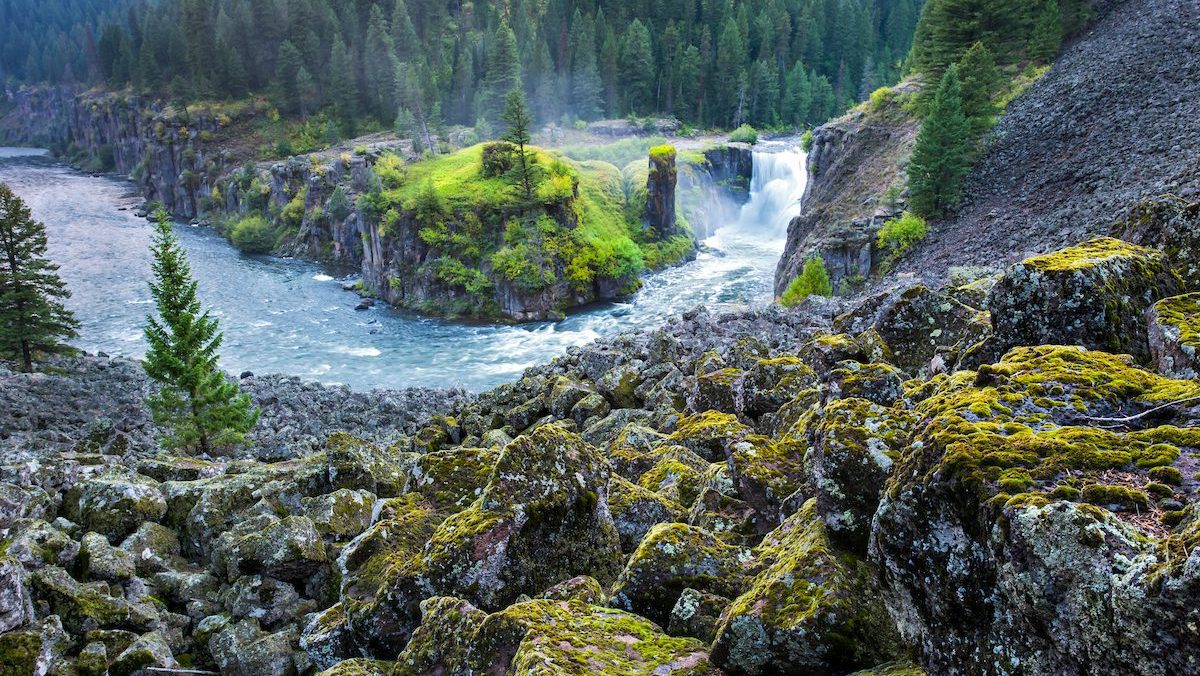Usda Starts Rolling Up Landmark ‘roadless Rule’
 | Author:
Robert Chaney, Mountain Journal
Robert Chaney, Mountain Journal |
USDA Starts Rolling Up Landmark ‘Roadless Rule’
Robert Chaney
Mountain Journal
Critics say Trump administration’s attempt at ‘commonsense management of our national forests’ jeopardizes 58 million acres of public lands.
This article was originally published in the Mountain Journal and adapted by the Montana Free Press. It is published here courtesy of the Montana Free Press.
https://montanafreepress.org/2025/09/01/usda-starts-rolling-up-landmark-roadless-rule/?utm_medium=email&utm_campaign=Newspack%20Newsletter%20%28251762%29&utm_source=2
The U.S. Forest Service formally began rescinding the 2001 Roadless Rule on Aug. 29.
More exactly, the agency is “publishing a notice seeking public comment on its intention to develop an environmental impact statement for the proposed rescission of the rule,” according to a U.S. Department of Agriculture statement. The draft EIS might be available later this winter, triggering another round of public review, followed by more rulemaking.
The original rule took almost four years to reach final publication in the Federal Register, involving more than 600 public hearings and 1.6 million comments. It was followed by more than a decade of lawsuits challenging various parts applying to the Lower 48 states. Alaska’s Tongass National Forest roadless status remained in court through 2025, although the rule’s elimination could finally make the issue moot.
In an Aug. 27 press release, U.S. Secretary of Agriculture Brooke Rollins declared that revoking the rule was “one step closer to common sense management of our national forests.” She linked the effort to President Donald Trump’s Executive Order 14192, Unleashing Prosperity Through Deregulation to “get rid of overcomplicated, burdensome barriers that hamper American business and innovation.”
Rollins first announced her intention to open 58 million acres of inventoried roadless Forest Service land to development on June 23. Since then, she has also unveiled plans to decentralize the entirety of the USDA, including elimination of the Forest Service’s regional office structure. Combined with the recent loss of thousands of Forest Service staff through firings and resignations, agency observers have questioned how it will accomplish all that change.
Montana has approximately 6 million acres of inventoried roadless landscape overseen by the Forest Service. Julia Altemus, executive director of Montana Wood Products, told Mountain Journal much of that is at high elevation or otherwise unprofitable locations.
“That’s why they put them [in the inventory],” Altemus said. “Even if they rescind the Roadless Rule, the lands that go out of the inventory status have to fall into the individual forest plans. It doesn’t mean it necessarily opens up a lot of lands for logging.”
Each national forest has a specific forest plan guiding how it manages its landscape for logging, recreation, wilderness, wildlife habitat, and other activity. For example, Montana has seven national forests, each overseeing a portion of its more than 6 million inventoried roadless acres. That includes places such as the Beartooth Front near Red Lodge, Sacajawea Peak in the Bridger Range, and large parts of the Crazy Mountain Range, according to a list compiled by Wild Montana.
“I’m trying to quit having people’s hair going on fire,” Altemus said of the speculation. “We’re not going to clearcut 6 million acres — that’s not going to happen. We’re still years out, and the whole thing will be litigated.”
Elsewhere in Greater Yellowstone, Idaho has its own inventoried roadless rule for 9.3 million acres that is not affected by the Forest Service announcement. Wyoming has 3.2 million acres of inventoried roadless Forest Service land that would be affected by the rule’s elimination.
“For nearly 25 years, the Roadless Rule has frustrated land managers and served as a barrier to action – prohibiting road construction, which has limited wildfire suppression and active forest management,” Forest Service Chief Tom Schultz said in the release. “The forests we know today are not the same as the forests of 2001. They are dangerously overstocked and increasingly threatened by drought, mortality, insect-borne disease, and wildfire. It’s time to return land management decisions where they belong – with local Forest Service experts who best understand their forests and communities.”
Wild Montana spokesman Alex Blackmer disputed much of Schultz’s claim.
“They’re using timber harvest and wildfire management as a Trojan horse,” Blackmer told Mountain Journal. “Timber companies don’t particularly want this. They can achieve timber goals in already accessible stands of trees. And the Forest Service personnel on the ground don’t want this. They have an $8 billion maintenance backlog trying to maintain access to roads we already have.”
As for wildfire risk, Blackmer cited National Interagency Fire Center analyses showing that 88 percent of wildfires are human-caused.
“The Roadless Rule explicitly allows for not just fire suppression but proactive roadbuilding to prevent fires and provide for public safety,” he said. “When you build more roads into roadless [areas], the odds of fires being started are much higher. Making that tradeoff without meaningfully affecting our ability to manage forests will make the problem worse.”
Anyone wishing to comment on the USDA plan to rescind the Roadless Rule can do so through the Federal Register public comment portal. This first round of comments closes on Sept. 19.
Article Images
Click on Image Thumbnail(s) to view fullsize image
PhotoCredit: See caption
Image 1 Caption: Lower Mesa Falls on the Henry’s Fork of the Snake River in the Caribou-Targhee National Forest, Idaho.
Photo Credit: Charlie Lansche, lastchancegallery.com
Image 2 Caption: Logo
Image 3 Caption: Logo

_16.png)
_0.png)